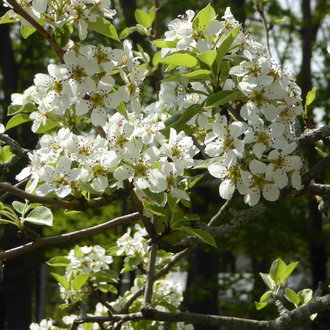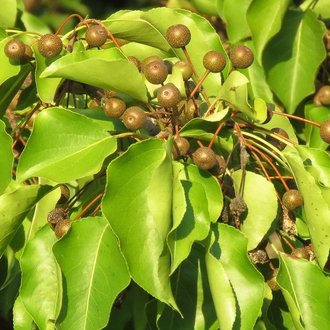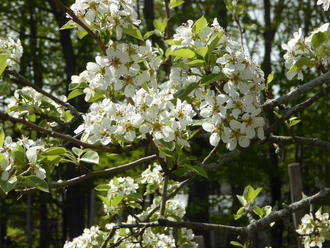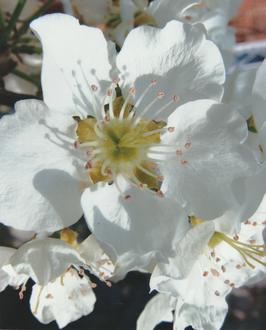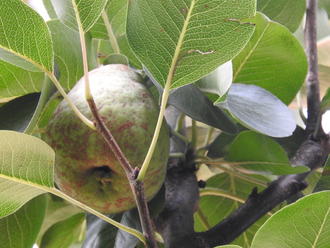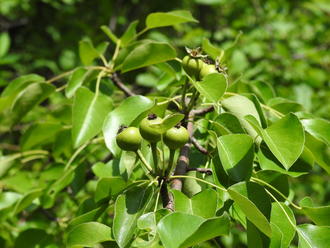Common Pear (Pyrus communis L.)
Also known as European pear.
↑Summary
Most cultivated pears in the West are from this species. Native to Europe and Western Asia, this tree has become established across North America, usually persisting mostly around abandoned orchards.
↑Range - Expand
| Legend | Color |
| Introduced | |
| Introduced or Not Present |
This tentative map is based on our own research. It may have limited data on Canada and/or Mexico, and there is some subjectivity in our assignment of plants as introduced vs. expanded. Read more in this blog post.
Although this plant occurs somewhere in each of these regions, it may only occur in a small part of some or all of them.
This species is also introduced in Canada and Mexico; we have yet to build these portions of its map.
↑Similar Plants
↑Habitat
In North America, mostly found in anthropogenic habitats, including forest edges, meadows, and abandoned fields, most frequently around abandoned orchards. Mostly limited to open, high-light habitats.
The species this species is derived from (probably originally as a hybrid) grow in their native range as a pioneer species in sunny, open habitats, including on dry soils, where there is little competition from other woody plants.
↑Links & External Resources
• Pear | The Wood Database (About This Site)
• Pyrus communis (Common Pear) | USDA PLANTS Database (About This Site)
• Pyrus communis | Go Botany (About This Site)
• Pyrus communis (Common Pear) | Missouri Botanical Garden Plant Finder (About This Site)
• Common Pear | Virginia Tech Dendrology Factsheets (About This Site)
• Pyrus communis | Biota of North America Project (BONAP) (About This Site)
• Pyrus communis | NatureServe Explorer (About This Site)
• Pyrus communis | Flora of North America (About This Site)
• Common Pear | Maryland Biodiversity Project (About This Site)
• Pyrus communis L. | Plants of the World Online (POWO) (About This Site)
• Pyrus communis L. (Common Pear) | Digital Atlas of the Virginia Flora (About This Site)



